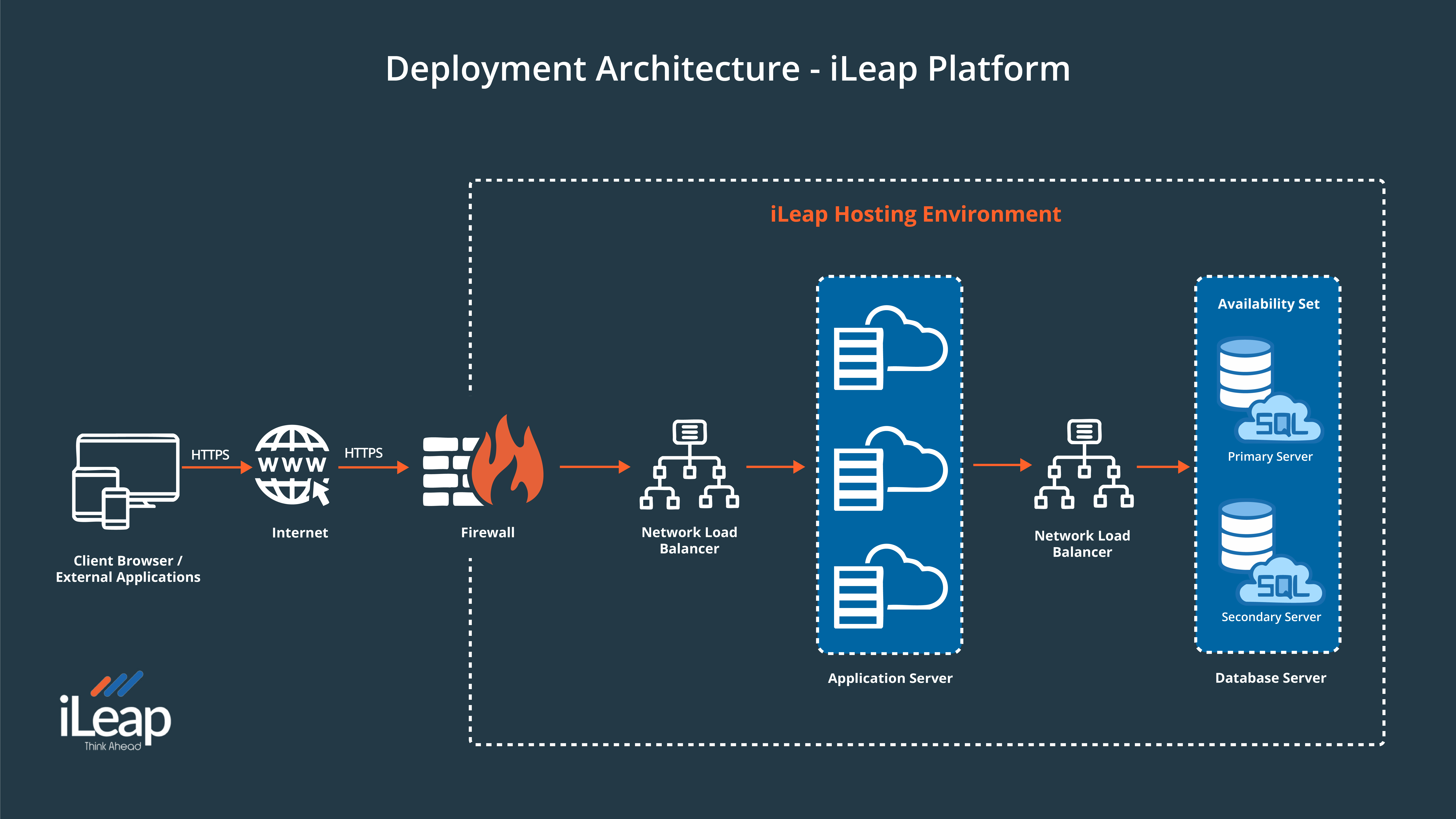|
|
Deployment Architecture - Overview |
|
This section details the overall architecture for the two key iLeap Platform implementation types. iLeap Platform is offered in both single-tenant & multi-tenant deployments. iLeap Platform's deployment architecture is primarily designed to meet diverse business needs through its flexible options for Cloud and On-Premises environments. iLeap's robust deployment options results in flexibility, high availability, better security, easy maintenance and affordability for its customers. See also: Enterprise Scalability Features |
iLeap Platform Deployment Options - Overview
|
iLeap platform offers flexible deployment options designed to cater to diverse enterprise needs and technical environments. Enterprises can choose between on-premises deployment, where the platform is installed directly on local servers, providing complete control over their data, security, & infrastructure. This option is particularly beneficial for businesses with stringent regulatory requirements or specific data governance policies. Alternatively, iLeap supports cloud-based deployment, allowing organizations to leverage the scalability and flexibility of cloud infrastructure. This option enables rapid provisioning, reduces the need for extensive hardware investments, and ensures that the latest updates and features are readily available. Additionally, iLeap platform provides hybrid deployment capabilities, allowing businesses to combine both on-premises and cloud solutions. This flexibility supports businesses in gradually transitioning to the cloud while still maintaining critical workloads on-premises. Furthermore, the platform can be integrated with existing/legacy enterprise systems, providing seamless interoperability and enhancing the overall user experience. With its robust deployment options, iLeap ensures that enterprises can select a solution that aligns with their operational requirements and strategic goals, facilitating more efficient implementation and maximizing the return on investment. |
iLeap Platform can be deployed on:

On-Premises
|
For organizations with strict compliance or data residency requirements, iLeap supports On-Premises deployments. This option allows enterprises to maintain complete control over their application environment, data, and security protocols. With on-premises deployment, businesses can integrate with existing IT infrastructure and customize their application architecture according to specific needs while leveraging the iLeap’s rapid development capabilities. With iLeap On-Premises, the server side components of the iLeap Platform are hosted on servers inside your organization's firewall. iLeap On-Premises can operate in a multi-tenant configuration - Platform as a Service (Pass). You can connect to services inside or outside your firewall, and maintain complete control of the connections, high availability, and security. |

On-Cloud
|
One of the primary deployment options is the iLeap Cloud, a fully managed service that enables businesses to focus on building applications without the overhead of infrastructure management. This cloud-based approach ensures high availability, automatic scaling, and security, empowering enterprises to deliver applications seamlessly. iLeap Cloud runs entirely in the cloud with no software installed in your local environment. It is a multi-tenant Platform as a Service (PaaS) that automates the deployment, scaling, and management of iLeap applications and can connect with other cloud-based services and platforms, such as Microsoft office 365 or Microsoft Dynamics CRM. It manages infrastructure provisioning, security, and maintenance, allowing developers to focus on application development. With a subscription to iLeap Cloud, an organization's infrastructure is provisioned,configured and tuned for high availability, performance, security and reliability. The iLeap Cloud physical infrastructure is hosted in the secure data centers of Cloud Service Provider associated. |

The following diagram depicts the iLeap Platform's deployment architecture.


Hybrid Mode
|
iLeap's architecture also supports a hybrid model where applications can be developed in the cloud and later moved to on-premise environments, or vice versa. This deployment option allows businesses to leverage the flexibility of the cloud while keeping their critical data and applications on-premise for security or compliance purposes. In other words, this flexibility is essential for businesses that may need to adapt their deployment strategy over a period of time. |

Enterprise Scalability Features
|
iLeap Platform is designed from the grounds-up to facilitate rapid application development while ensuring scalability for enterprise-level applications. It offers a comprehensive set of scalability features that empower organizations to develop, deploy, and manage applications efficiently while adapting to evolving demands in a rapid-paced digital world.
Following are the key enterprise scalability features of iLeap Platform.
|

